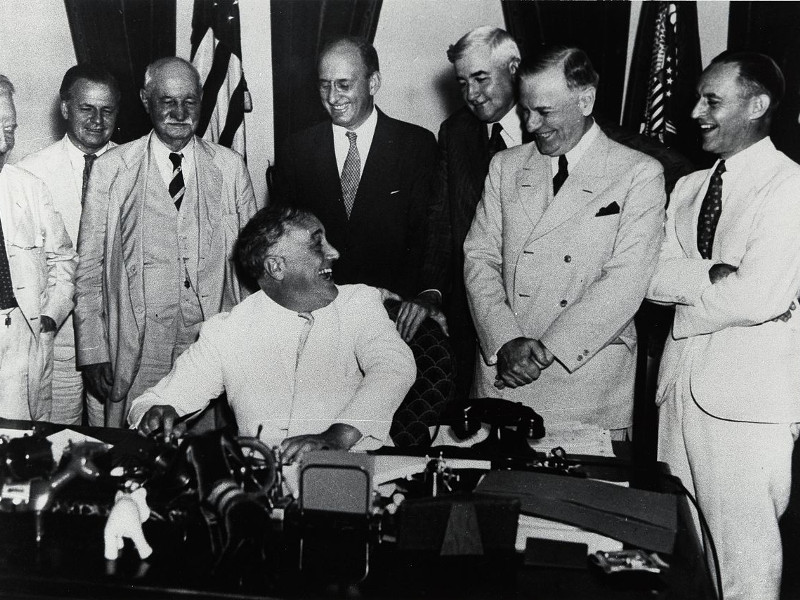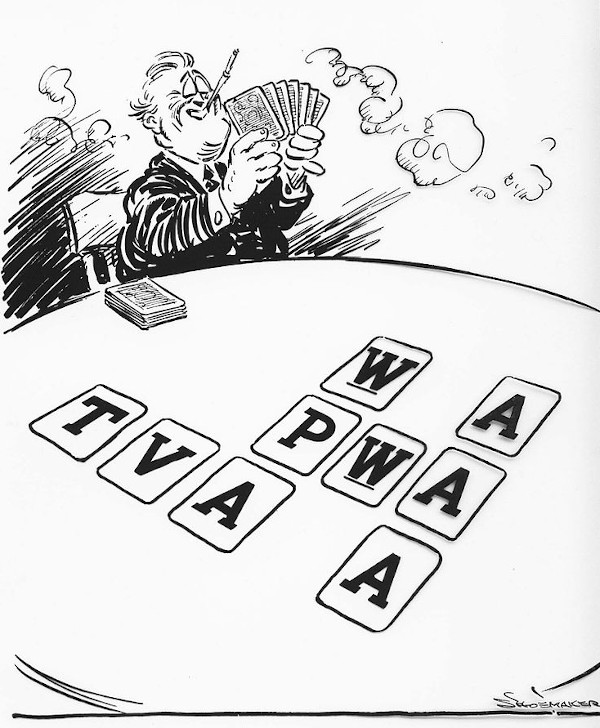Glass–Steagall Act
06/16/1933 AD decreed
The Banking Act of 1933, commonly known as the Glass–Steagall Act, enacted two long-standing Congressional projects:
- a federal system of bank deposit insurance championed by Representative Steagall
- the regulation (or prohibition) of the combination of commercial and investment banking and other restrictions on "speculative" bank activities championed by Senator Glass as part of a general desire to "restore" commercial banking to the purposes envisioned by the Federal Reserve Act of 1913.
Although the legislation thus fulfilled Congressional designs and, at least in its deposit insurance provisions, was resisted by the Franklin Delano Roosevelt Administration, it later became considered part of the New Deal.
The deposit insurance and many other provisions of the Act were criticized during Congressional consideration.
The entire Act was long-criticized for limiting competition and thereby encouraging an inefficient banking industry.
Supporters of the Act cite it as a central cause for an unprecedented period of stability in the U.S. banking system during the ensuing four or, in some accounts, five decades following 1933.
Lattitude: 38.9072° N
Longitude: 77.0369° W
Region: North America

Modern Day United States
Subjects Who or What decreed?
-
Franklin Delano Roosevelt (FDR) 32nd President of ...
Objects To Whom or What was decreed?
-
FDIC (Federal Deposit Insurance Corporation) The Federal Deposit Insu...
Timelines (that include this event)
Events in 1933 MORE













